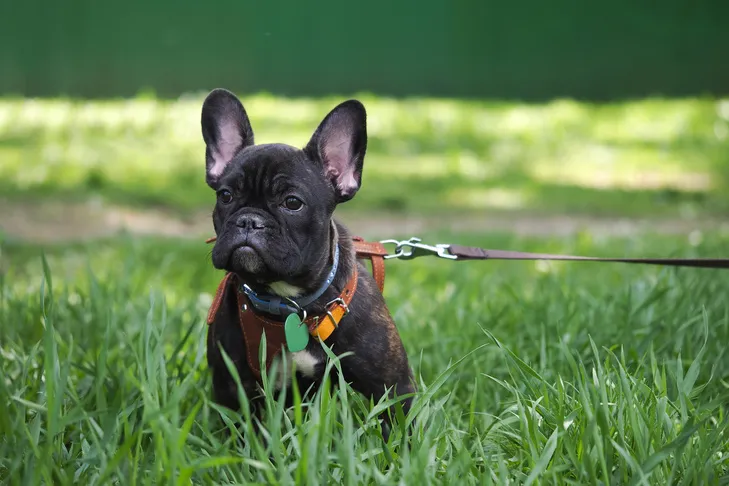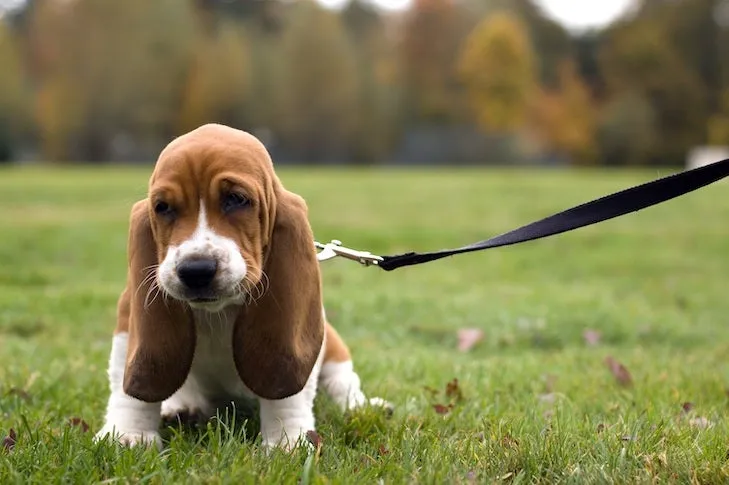Many new dog owners assume that puppies instinctively know how to walk politely on a leash. However, this crucial skill is something that must be taught and practiced, forming the cornerstone of enjoyable and safe outings. Mastering the Best Way To Leash Train Your Puppy is not just about control; it’s about building a strong bond with your dog and ensuring their safety and the comfort of others in public spaces. This guide, drawing on expert advice from renowned dog trainers like Kathy Santo and resources such as the AKC, will walk you through foundational steps and provide practical solutions for common challenges, ensuring your furry friend becomes a well-behaved walking companion. If you’re encountering difficulties already, understanding what to do when your puppy pulls on the leash can be an excellent starting point.
Setting the Foundation for Successful Puppy Leash Training
Establishing a solid groundwork is essential for any future walks with your dog. By focusing on positive associations and clear communication, you can make leash training a rewarding experience for both of you.
Introduce Collar, Harness, and Leash
The first step in any leash training regimen is to familiarize your puppy with their walking gear. Begin by letting them wear a collar, harness, and leash for very short periods while indoors. Make these sessions fun and rewarding; play with them, offer tasty treats, and provide plenty of praise. The goal is for your puppy to associate their collar-and-leash time with positive experiences, making it something they look forward to rather than dread. This initial positive conditioning is vital for long-term success.
Teach a Positive Reinforcement Cue
A simple sound cue can become an incredibly powerful tool in your leash training arsenal. This cue should signal to your puppy that a reward is imminent. Popular options include a clicker, a verbal marker like “yes,” or a distinct tongue cluck. To teach this, find a quiet, distraction-free area. With your puppy wearing their collar and leash, make your chosen sound cue. The instant your puppy turns their head towards you or makes eye contact, immediately reward them with a small, high-value treat. After several repetitions, your puppy will not only look at you but will also begin to move towards you in anticipation of the treat.
 French bulldog puppy in a harness sitting in tall green grass on a leash for a walk.
French bulldog puppy in a harness sitting in tall green grass on a leash for a walk.
Encourage Your Puppy to Come to You
Once your puppy understands the cue, start encouraging them to move with you. While they are on their way to you after hearing the cue, take a few steps backward. When they reach you, reward them generously. Gradually, increase the number of steps you take backward, working towards a continuous motion where your puppy, upon hearing the cue, comes to you and walks alongside you for a short distance. Remember that puppies have notoriously short attention spans; keep your training sessions brief and always end them on a positive note, before your puppy becomes mentally fatigued or loses interest.
Practice Leash Walking Indoors
With the foundational understanding established, it’s time to practice walking with the leash in a controlled indoor environment. Choose a room with minimal distractions. For your puppy, simply feeling and seeing the leash around them, combined with the new sensation of walking with you, will be enough of a challenge. Continue to offer treats and verbal praise as your puppy learns to follow you calmly while on the leash. If you find your puppy constantly trying to mouth or tug at their leash during these early stages, you might find it helpful to learn how to get a dog to stop biting their leash.
Transition Leash Training Outdoors
Finally, the moment arrives to test your puppy’s developing skills in the great outdoors. This step introduces a whole new level of challenge, as every sound, smell, and sight will be incredibly intriguing and novel for your puppy. Patience is paramount here, and your initial outdoor walks should be kept very short. Maintain constant awareness of your puppy’s behavior. If you notice them preparing to lunge towards something or getting overly distracted, use your cue sound, take a few steps away to regain their focus, and then reward them with a treat for following you. This proactive approach helps your puppy learn to focus on you despite external stimuli. As they grow, you’ll want to ensure they maintain good manners, including knowing how to break a dog from jumping up on people they meet.
 Basset Hound puppy sitting in the grass on lead.
Basset Hound puppy sitting in the grass on lead.
Troubleshooting Common Leash Training Challenges
Even with a solid foundation, puppies can encounter various issues as they mature, explore new places, and face new distractions. The ultimate goal is to achieve loose-leash walking, which is significantly more pleasant for both you and your dog, and a prerequisite for achievements like the Canine Good Citizen test. Here are some solutions for common leash training problems, often suggested by experts like those at the AKC GoodDog! Helpline.
Addressing Puppy Pulling on Leash
If your puppy begins to pull ahead or in another direction, adopt the “be a tree” technique. Stand absolutely still and refuse to move an inch until your dog returns to you, even if it’s just for a moment. Avoid yanking, jerking the leash, or dragging your dog. These actions can be counterproductive and even harmful. For persistent pullers, alternative training tools such as front-hook harnesses or head halters can be very effective in redirecting their focus and making pulling less rewarding.
Managing Puppy Lunging
When your dog shows signs of lunging at something during a walk—be it another dog, a car, or a skateboarder—it’s crucial to be proactive. Anticipate the lunge and try to redirect their attention with a treat before they have the chance to react. Increase the distance between your dog and the perceived threat or exciting target. Staying alert and prepared is key to managing these situations before they escalate. While such behavior might be more common in certain breeds like herding dogs, any puppy can be startled or overstimulated by new or exciting elements in their environment. Ultimately, a well-socialized and well-trained dog, including excellent leash manners, is often a goal for many owners, even those aiming to learn how to train your dog to be a therapy dog.
Handling Puppy Barking on Walks
Some dogs develop a habit of barking excessively at other dogs or passersby during walks. This behavior is often a symptom of insufficient physical exercise or mental stimulation. Ensure your puppy receives the appropriate amount of activity tailored to their age and breed. If barking persists, employ a similar strategy to managing lunging: create distance from the trigger and offer treats before they start to bark. Over time, your puppy will learn to associate the sight of other dogs with turning their attention back to you for a reward.
As your puppy gains experience and confidence, you’ll naturally find yourself needing fewer treats and less intervention during walks. However, it’s always a good practice to keep some treats on hand for random positive reinforcement of good leash-walking behavior. This occasional, unpredictable reward keeps your puppy engaged and reinforces their excellent manners. For advanced goals, like training your dog for pet therapy, consistent leash training is foundational.
Conclusion
Leash training your puppy is a journey that requires patience, consistency, and positive reinforcement. By following these steps—from introducing the gear and teaching a cue to practicing in various environments and troubleshooting common issues—you are laying the groundwork for a lifetime of enjoyable and safe walks. Remember to keep sessions positive, short, and end on a high note, always reinforcing good behavior with treats and praise. If you ever find yourself needing personalized guidance or encountering particularly challenging behaviors, don’t hesitate to seek expert advice from professional dog trainers who can offer tailored support.
